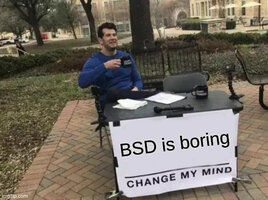openbsd98324
Still Fresh
- Joined
- Jan 7, 2022
- Messages
- 60
Hello,
That would be really cool to use BSD on the Pyra and Pandora. BSD is very powerful system.
When will you manage to port BSD to run on Pyra and Pandora?
Kind regards,
James
That would be really cool to use BSD on the Pyra and Pandora. BSD is very powerful system.
When will you manage to port BSD to run on Pyra and Pandora?
Kind regards,
James


